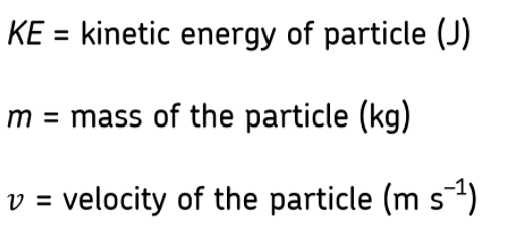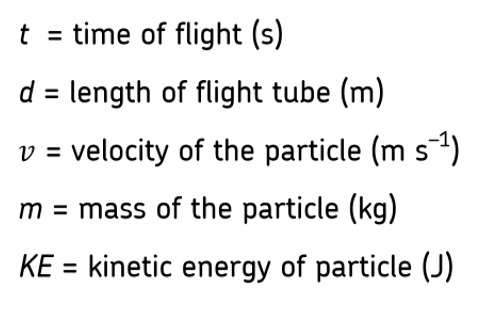3.1.1 Mass Spec
1/16
There's no tags or description
Looks like no tags are added yet.
Name | Mastery | Learn | Test | Matching | Spaced |
|---|
No study sessions yet.
17 Terms
What type of particles are used for electron impact
elements and molecules with a low MR
How does electron impact work
high-energy electrons are fired at the sample from an electron gun towards a positively charged plate. the electron impact knocks off one electron from each particle to form a 1+ ion
Electron impact equation
X (g) -> X+ (g) + e-
What type of particles are used for electrospray ionisation
molecules with a higher Mr
How does electrospray ionisation work
sample is dissolved in a volatile solvent and injected into the vacuum ionisation chamber through a hypodermic needle. the needle is positively charged so each molecule gains a proton. the solvent then evaporates
Electrospray ionisation equation
X (g) + H+ -> XH+
How are the ions accelerated
using an electric field so they all have the same kinetic energy
How does separation of charged ions work
ions with different masses have a different time of flight. smaller ions have a shorter time of flight
How does detection work
the ions hit the detector and gain an electron which produces a current. the more electrons hitting the plate, the larger the current
What is the detector
a negatively charged plate
What are peaks below the actual mass number due to on a mass spectra?
fragmented ions
What are peaks above the actual mass number due to?
isotopes like C-13 or H-2
relative atomic mass
the weighted average mass of all the isotopes of an element compared to 1/12th the mass of a Carbon-12 atom.

Equation linking KE, m and v
KE = 1/2 mv^2

Equation linking t, d and v
t = d/v

Equation linking t, d, v, m and KE
t = d sqrt (m/2KE)
Molecular mass
the weighted average mass of a molecule compared to 1/12th of the mass of a Carbon-12 atom